Orolia CTCSS Tone Filter 1118 User manual
- Type
- User manual

CTCSS Tone Filter
Model 1118
User Manual
For use with SecureSync
GPS Master Oscillators
1565 Jefferson Road
Rochester, NY 14623
Phone: US +1.585.321.5800
Fax: US +1.585.321.5219
www.spectracomcorp.com
Part Number 1118-5000-0050
Manual Revision H
October 2013

Copyright © 2011-2013 Spectracom Corporation. The contents of this publication may not be
reproduced in any form without the written permission of Spectracom Corporation. Printed in
USA.
Specifications subject to change or improvement without notice.
Spectracom, NetClock, Ageless, TimeGuard, TimeBurst, TimeTap, LineTap, MultiTap,
VersaTap, and Legally Traceable Time are Spectracom registered trademarks. All other
products are identified by trademarks of their respective companies or organizations. All rights
reserved.

SPECTRACOM LIMITED WARRANTY
LIMITED WARRANTY
Spectracom warrants each new product manufactured and
sold by it to be free from defects in software, material,
workmanship, and construction, except for batteries, fuses, or
other material normally consumed in operation that may be
contained therein AND AS NOTED BELOW, for five years after
shipment to the original purchaser (which period is referred to
as the “warranty period”). This warranty shall not apply if the
product is used contrary to the instructions in its manual or is
otherwise subjected to misuse, abnormal operations, accident,
lightning or transient surge, repairs or modifications not
performed by Spectracom.
The GPS receiver is warranted for one year from date of
shipment and subject to the exceptions listed above. The
power adaptor, if supplied, is warranted for one year from date
of shipment and subject to the exceptions listed above.
THE ANALOG CLOCKS ARE WARRANTED FOR ONE YEAR
FROM DATE OF SHIPMENT AND SUBJECT TO THE
EXCEPTIONS LISTED ABOVE.
THE TIMECODE READER/GENERATORS ARE
WARRANTED FOR ONE YEAR FROM DATE OF SHIPMENT
AND SUBJECT TO THE EXCEPTIONS LISTED ABOVE.
The Rubidium oscillator, if supplied, is warranted for two years
from date of shipment and subject to the exceptions listed
above.
All other items and pieces of equipment not specified above,
including the antenna unit, antenna surge suppressor and
antenna pre-amplifier are warranted for 5 years, subject to the
exceptions listed above.
WARRANTY CLAIMS
Spectracom’s obligation under this warranty is limited to in-
factory service and repair, at Spectracom’s option, of the
product or the component thereof, which is found to be
defective. If in Spectracom’s judgment the defective condition
in a Spectracom product is for a cause listed above for which
Spectracom is not responsible, Spectracom will make the
repairs or replacement of components and charge its then
current price, which buyer agrees to pay.
Spectracom shall not have any warranty obligations if the
procedure for warranty claims is not followed. Users must
notify Spectracom of the claim with full information as to the
claimed defect. Spectracom products shall not be returned
unless a return authorization number is issued by Spectracom.
Spectracom products must be returned with the description of
the claimed defect and identification of the individual to be
contacted if additional information is needed. Spectracom
products must be returned properly packed with transportation
charges prepaid.
Shipping expense: Expenses incurred for shipping
Spectracom products to and from Spectracom (including
international customs fees) shall be paid for by the customer,
with the following exception. For customers located within the
United States, any product repaired by Spectracom under a
“warranty repair” will be shipped back to the customer at
Spectracom’s expense unless special/faster delivery is
requested by customer.
Spectracom highly recommends that prior to returning
equipment for service work, our technical support department
be contacted to provide trouble shooting assistance while the
equipment is still installed. If equipment is returned without first
contacting the support department and “no problems are
found” during the repair work, an evaluation fee may be
charged.
EXCEPT FOR THE LIMITED WARRANTY STATED ABOVE,
SPECTRACOM DISCLAIMS ALL WARRANTIES OF ANY
KIND WITH REGARD TO SPECTRACOM PRODUCTS OR
OTHER MATERIALS PROVIDED BY SPECTRACOM,
INCLUDING WITHOUT LIMITATION ANY IMPLIED
WARRANTY OR MERCHANTABILITY OR FITNESS FOR A
PARTICULAR PURPOSE.
Spectracom shall have no liability or responsibility to the
original customer or any other party with respect to any liability,
loss, or damage caused directly or indirectly by any
Spectracom product, material, or software sold or provided by
Spectracom, replacement parts or units, or services provided,
including but not limited to any interruption of service, excess
charges resulting from malfunctions of hardware or software,
loss of business or anticipatory profits resulting from the use or
operation of the Spectracom product or software, whatsoever
or howsoever caused. In no event shall Spectracom be liable
for any direct, indirect, special or consequential damages
whether the claims are grounded in contract, tort (including
negligence), or strict liability.
EXTENDED WARRANTY COVERAGE
Extended warranties can be purchased for additional periods
beyond the standard five-year warranty. Contact Spectracom
no later than the last year of the standard five-year warranty for
extended coverage.
SPECTRACOM 1565 Jefferson Road, Rochester, NY 14623
+1.585.321.5800 FAX: +1.585.321.5218 www.spectracomcorp.com [email protected]

This equipment has been tested and found to
comply with the limits for a Class B digital device,
pursuant to Part 15 of the FCC Rules. These limits
are designed to provide reasonable protection
against harmful interference in a residential
installation. This equipment generates, uses, and
can radiate radio frequency energy and, if not
installed and used in accordance with the
instructions, may cause harmful interference to
radio communications. However, there is no
guarantee that interference will not occur in a
particular installation. If this equipment does cause
harmful interference to radio or television reception,
which can be determined by turning the equipment
off and on, the user is encouraged to try to correct
the interference by one or more of the following
measures:
-- Reorient or relocate the receiving antenna.
-- Increase the separation between the equipment
and receiver.
-- Connect the equipment into an outlet on a circuit
different from that to which the receiver is
connected.
-- Consult the dealer or an experienced radio/TV
technician for help.

Model 1118 Spectracom
CTCSS Tone Generator User Manual
iii
Table of Contents
1 OVERVIEW .............................................................................................. 1-1
1.1 System Overview ........................................................................................................................... 1-1
1.2 Features ........................................................................................................................................ 1-2
1.3 Inventory ........................................................................................................................................ 1-2
1.3.1 Ancillary Kit .................................................................................................................................... 1-3
1.4 Inspection and Support .................................................................................................................. 1-4
2 SPECIFICATIONS ...................................................................................... 2-1
2.1 Outputs .......................................................................................................................................... 2-1
2.1.1 Standard CTCSS Frequency Output (Continuous Tone Controlled Squelch System) .................. 2-1
2.1.2 PTT Output .................................................................................................................................... 2-3
2.2 Inputs ............................................................................................................................................. 2-3
2.2.1 PTT Input ....................................................................................................................................... 2-3
2.2.2 Synchronized CTCSS Digital Inputs .............................................................................................. 2-3
2.2.3 18 kHz Clock Input (DB15) ............................................................................................................ 2-4
2.2.4 Input Power ................................................................................................................................... 2-4
2.3 Connector ...................................................................................................................................... 2-5
2.3.1 Data Sync Port J1 and J2 (DB-15M and F) on 1118...................................................................... 2-5
2.3.2 Note Regarding J3 ......................................................................................................................... 2-5
2.3.3 I/O Connector J4 ........................................................................................................................... 2-6
2.3.4 Transceiver Interface Port A J6 ..................................................................................................... 2-6
2.3.5 Transceiver Interface Port B J5 ..................................................................................................... 2-7
2.4 Mechanical (1118-1) ...................................................................................................................... 2-8
2.5 Mechanical (1118-2) ...................................................................................................................... 2-8
2.6 Environmental ................................................................................................................................ 2-8
3 INSTALLATION ........................................................................................ 3-1
3.1 Quick Installation Instructions – One Tone .................................................................................... 3-1
3.1.1 To Install More Than One Model 1118 Generating CTCSS #1 or #2: ............................................ 3-2
3.1.2 Details: Output Connections J4 or J6 ............................................................................................ 3-4
3.1.3 Jumper Settings – List in Numerical Sequence ............................................................................. 3-4
3.1.4 Input Connections J4 (1118-2) ...................................................................................................... 3-5
3.1.5 Input Connections J6 (1118-1 Only) .............................................................................................. 3-5
3.2 Detailed Installation Instructions .................................................................................................... 3-6
3.2.1 CTCSS Inputs ................................................................................................................................ 3-6
3.2.2 18 kHz Reference Input ................................................................................................................. 3-9
3.2.3 Power Input ................................................................................................................................... 3-9
4 SCHEMATICS ........................................................................................... 4-1
4.1 Product Schematic ........................................................................................................................ 4-1


Model 1118 Spectracom
CTCSS Tone Generator User Manual
1-1
1 Overview
The Model 1118 CTCSS Tone Generator is used in conjunction with the Spectracom
SecureSync Model 1200 to generate precision synchronized CTCSS tones. The master
oscillator must be equipped with option module 1204-14 for synchronized CTCSS outputs which
are typically required for the conventional analog land mobile radio base stations to successfully
simulcast.
There are 2 versions of the 1118; the 1118-2 a version with an enclosure, and the 1118-1, a rail
mount version. This manual lists the pins and connectors for the 1118-2 first, then the pins and
connections for the 1118-1 in brackets [ ].
Refer to Rev D of the manual if you will be connecting an existing 8195A, 8195B, 8197, or
8197B GPS Master Oscillator to the 1118.
1.1 System Overview
Using a master oscillator with Option 1204-14 installed to provide a synchronized CTCSS tone
to land mobile radio base station.
Figure 1-1: Block Diagram of Typical TX Site Interconnection

Spectracom Corporation Model 1118
CTCSS Tone Generator User Manual
1-2
The SecureSync GPS master Oscillator generates user configurable tone(s) and an 18 kHz
reference signal. The Model 1118 CTCSS boards receive the configured CTCSS tone(s) and
the 18 kHz reference from the master oscillator, as well as a PTT from the multiplexer. It
presents the selected CTCSS tone as a sine wave, and an active PTT signal to the simulcast
radio(s) following the PTT source at the head end. The tone can be configured for squelch tail
elimination.
Inputs to the Model 1118
INPUT
RECEIVED FROM
FUNCTION
CTC1 and CTC2
Master Oscillator
1
st
and 2
nd
tones (1204-14)
18 kHz
Master Oscillator
Clock Reference frequency
PTT (Push to Talk)
Multiplexer
Used to activate the delayed PTT output (gates
the CTCSS tone and provides squelch tail
elimination).
Inhibit input (if used)
Multiplexer
De-activates the CTCSS output tone
Power (7 to 20vdc)
(24 to 32 VDC for
option 24)
Transmitter
Powers the CTCSS board
Outputs from the Model 1118
INPUT
SENT TO
FUNCTION
CTCSS out
Transmitter
Selected CTCSS tone (Can be CTC1 or CTC2)
Held PTT output
(Push to talk)
Transmitter
Keys the transmitter.
1.2 Features
The Spectracom CTCSS Tone Generator offers the following features:
Tone locked to GPS on-time-point, so they launch in phase from all sites
Accuracy: Continuous self-calibrated to GPS provides 1.0 x 10
-11
frequency accuracy.
PTT input and an adjustable delayed PTT output.
TIA compliant CTCSS reverse burst.
Inhibit input that disables CTCSS tone generation.
1.3 Inventory
Before installing your Spectracom equipment, please verify that all material ordered has been
received. If there is a discrepancy, please contact Spectracom Customer Service at +1
585.321.5800.

Model 1118 Spectracom
CTCSS Tone Generator User Manual
1-3
1.3.1 Ancillary Kit
Your Spectracom CTCSS 1118 unit is provided with an ancillary kit containing the following
accessories:
Male DB9 Connector
Female DB9 Connector
DB9 Shields (2)
Male DB15 Connector
Female DB15 Connector
DB15 Shields (2)
3-Pin Plug
6-Pin Plug

Spectracom Corporation Model 1118
CTCSS Tone Generator User Manual
1-4
1.4 Inspection and Support
Unpack the equipment and inspect it for damage. If any equipment has been damaged in
transit, please contact Spectracom Customer Service at US 585.321.5800.
If any problems occur during installation and configuration of your Spectracom product, please
contact Spectracom Technical Support at US 585.321.5823 or US 585.321.5824.
CAUTION
Electronic equipment is sensitive to Electrostatic Discharge (ESD).
Observe all ESD precautions and safeguards when handling
Spectracom equipment.
NOTE: If equipment is returned to Spectracom, it must be shipped in its original packing
material. Save all packaging material for this purpose.

Model 1118 Spectracom
CTCSS Tone Generator User Manual
2-1
2 Specifications
Refer to Figure 2-1 for connector and jumper locations.
2.1 Outputs
2.1.1 Standard CTCSS Frequency Output
(Continuous Tone Controlled Squelch System)
Signal: 67-254 Hz sine wave derived from GPS disciplined oscillator with
configurable 180-degree inverted “reverse burst” tone when PTT
unkeyed. Refer to Table 2-1 for tone frequencies and H1 jumper position.
The desired CTCSS frequency tones are generated in the master
oscillator. The tones selected can be “exactly” on frequency (or rounded
to the nearest 0.333 Hz to support compatibility with sites using legacy
Spectracom Model 8195 or 8197 GPS Master Oscillators).
Connector: 12 pin pluggable header J4 pins 6 and 7 [or 6 Pin Header J6 pin 1, and 3
Pin Header J5 pin 1].
Signal Level: Adjustable with a potentiometer from 0.0 to 4.0 volts P-P (1.4 Vrms) into
600 ohms.
Source Impedance: 33 ohms
Harmonics: 25dB below the CTCSS fundamental minimum
Spurious: 25dB below the CTCSS fundamental minimum
PTT Operation: CTCSS tones are gated by PTT with a configurable PTT hold or
millisecond reverse burst.
Code
Tone Freq.
Tone Freq.
to nearest
1/3 Hz
H1
Pos
Code
Tone
Freq.
Tone Freq.
to nearest
1/3 Hz
H1
Pos
Code
Tone Freq.
Tone Freq.
to nearest
1/3 Hz
H1
Pos
XZ
67.0
67.000
B
1B
107.2
107.333
B
6A
173.8
173.666
A
WZ
69.3
69.333
B
2Z
110.9
111.000
B
6B
179.9
180.000
A
XA
71.9
72.000
B
2A
114.8
114.666
B
7Z
186.2
186.333
A
WA
74.4
74.333
B
2B
118.8
119.000
B
7A
192.8
192.666
A
XB
77.0
77.000
B
3Z
123.0
123.000
B
M1
203.5
203.666
A
WB
79.7
79.666
B
3A
127.3
127.333
B
8Z
206.5
206.666
A
YZ
82.5
82.666
B
3B
131.8
131.666
B
M2
210.7
210.666
A
YA
85.4
85.333
B
4Z
136.5
136.666
B
M3
218.1
218.000
A
YB
88.5
88.666
B
4A
141.3
141.333
B
M4
225.7
225.666
A
ZZ
91.5
91.666
B
4B
146.2
146.333
B
9Z
229.1
229.000
A
ZA
94.8
94.666
B
5Z
151.4
151.333
A
M5
233.6
233.666
A
ZB
97.4
97.333
B
5A
156.7
156.666
A
M6
241.8
241.666
A
1Z
100.0
100.000
B
5B
162.2
162.333
A
M7
250.3
250.333
A
1A
103.5
103.666
B
6Z
167.9
168.000
A
0Z
254.1
254.000
A
TABLE 2-1: CTCSS Standard Frequency Chart

Spectracom Corporation Model 1118
CTCSS Tone Generator User Manual
2-2
A
B
A
B
A B
PTT DELAY
ADJUST
AMPLITUDE
SPECTRACOM CORP.
1118-000X-2000 CTCSS ASSY
REV C 10/03
TP12
TP4
TP2
H2
TP13
TP7
H5
H12
H13
H17
H16
H15
TP5
TP3
R14
R24
TP8
H4
T1
J4
H18
H11
H10
TP10
H7
H23H8
H20
H3
R29
TP6
TP1
H22
TP9
H6
H19
H24
H14
H9
H1
J3
H21
J1
J6
J5
J2
FIGURE 2-1: Connector and Jumper Locations

Model 1118 Spectracom
CTCSS Tone Generator User Manual
2-3
2.1.2 PTT Output
Signal: Digital
Connector: 12 Pin Pluggable Header J4, Pin 9 [or 6 Pin Header J6, Pin 6]
Signal Level: Output structure is a Solid State Switch consisting of two MOSFETS (AC
and DC operation) that present a high resistance when off and less than
0.4 ohms when on.
Pulse Width: Follows PTT Input plus an adjustable delay (100 – 500 milliseconds),
factory set to 150 milliseconds.
Delay Control: The trailing edge of the PTT output is delayed 100 – 500 milliseconds
from the trailing edge of the PTT input, factory set to 150 milliseconds.
Delayed PTT
Operation: CTCSS tones are gated by PTT; the PTT input active immediately causes
the PTT Output to go active. PTT inactive will cause the PTT output to go
inactive after the PTT hold time. The delay is factory set to 150
milliseconds.
2.2 Inputs
2.2.1 PTT Input
Signal: Digital CMOS levels
Connector: 12 Pin Pluggable Header J4 Pin 5 [or 6 Pin Header J2 Pin 5].
Signal Level: CMOS 0.5-4.5 volts or contact closure to ground, minimum sink current =
0.01 amps. Turn on current equals 10 ma and turn off current equals
1ua. Turn on voltage equals 0.8 volts and turn off voltage equals 4.5
volts
Impedance: 2700 ohms
Polarity: H3 position A for PTT on with closed circuit
H3 position B for PTT on with open circuit
2.2.2 Synchronized CTCSS Digital Inputs
There are 2 possible CTCSS inputs, labeled CTCSS #1 and CTCSS #2 on the DB-15 input. The
different CTCSS frequencies are set on the SecureSync that is driving the CTCSS filter board
assembly. The input to the CTCSS filter assembly is on connector J1 (CTCSS #1 and 2).
J2 on the 1118 is a loop thru connector for connecting more CTCSS filter boards set on the
CTCSS #1 and CTCSS #2 to the same SecureSync output. If the loop thru connector is used,

Spectracom Corporation Model 1118
CTCSS Tone Generator User Manual
2-4
the termination of the CTCSS and 18 kHz signals should be set on the last CTCSS filter board
in the string.
The CTCSS inputs are individually selected and terminated with jumpers. Use either jumper pair
H6 and H7 for CTCSS #1, or H8 and H9 for CTCSS #2 to select one of the CTCSS inputs.
Signal: RS-485
Connector: DB15 male connector J1, pins 7 and 8 for CTCSS #1, pins 5 and 6 for
CTCSS #2
Impedance: 120 ohms or high impedance. A jumper can individually terminate each
CTCSS input: jumper H14 for CTCSS #1, jumper H15 for CTCSS #2
2.2.3 18 kHz Clock Input (DB15)
Signal: RS-485
Connector: DB15 male connector J1 Pins 3 and 4
Impedance: 120 ohms or high impedance selected by jumper H19.
2.2.4 Input Power
DC Input: 7 to 20 VDC, (24 to 32 VDC for option 24), 1 W
Connector: 12 Pin Pluggable Header J4 pins 3 and 2 [or 6 Pin Header J6 pins 3 and 4]
Polarity: Positive on J4 pin 3 [or J6 pin 4]

Model 1118 Spectracom
CTCSS Tone Generator User Manual
2-5
2.3 Connector
2.3.1 Data Sync Port J1 and J2 (DB-15M and F) on 1118
Connector: DB15
Pinout: Refer to Table 1-2
1118 PIN
SIGNAL
DESCRIPTION
OSC 1204-14 DB-9 OUTPUT
1
Reserved
Reserved
2
Reserved
Reserved
3
+18 kHz
RS-485 B Terminal
2
4
-18 kHz
RS-485 A Terminal
7
5
+CTCSS Signal #2
RS-485 B Terminal
3
6
- CTCSS Signal #2
RS-485 A Terminal
8
7
+CTCSS Signal #1
RS-485 B Terminal
1
8
- CTCSS Signal #1
RS-485 A Terminal
6
9
Ground
Cable Shield
9
10
Reserved
Reserved
11
Reserved
Reserved
12
Reserved
Reserved
13
Ground
Ground
14
Ground
Ground
15
Ground
Ground
TABLE 1-2: DB-15 Input Pin Assignments
2.3.2 Note Regarding J3
Data Sync J3 DB-9 on 1118 is used only with 8195 GPS Master Oscillators, not with
SecureSync.

Spectracom Corporation Model 1118
CTCSS Tone Generator User Manual
2-6
2.3.3 I/O Connector J4
Connector: 12 pin connectable terminal block
Pinout: Refer to Table 1-6
PIN
SIGNAL
DESCRIPTION
1
Ground
Ground
2
Ground
Ground
3
+7 to 20 Volts (+24 to 32 VDC for option 24)
Positive power supply voltage
4
Unused
Unused
5
PTT IN
PTT input
6
CTCSS Out +
CTCSS output high
7
CTCSS Out -
CTCSS output low
8
Unused
Unused
9
Delayed PTT Out
Delayed PTT output positive
10
Delayed PTT Out
Delayed PTT output low side
11
Inhibit in
Inhibit input
12
Unused
Unused
TABLE 1-6: I/O Connector Pin Assignments
2.3.4 Transceiver Interface Port A J6
Connector: 6 Pin Header (0.156 spacing)
Pinout: Refer to Table 1-4
PIN
SIGNAL
DESCRIPTION
1
CTCSS Output
CTCSS Output high
2
GND
GND
3
GND
GND
4
+ 7 to 20 Volts (+24 to 32 VDC for option 24)
Positive Power Supply Voltage
5
PTT In
PTT Input
6
Delayed PTT Out +
Delayed PTT Output positive
TABLE 1-4: Transceiver Interface Port A Pin Assignments

Model 1118 Spectracom
CTCSS Tone Generator User Manual
2-7
2.3.5 Transceiver Interface Port B J5
Connector: 3 Pin Header (0.156 spacing)
Pinout: Refer to Table 1-5
PIN
SIGNAL
DESCRIPTION
1
CTCSS Output -
CTCSS Output Low
2
Delayed PTT Out Low
Delayed PTT Output Low
3
INHIBIT IN
INHIBIT Input
TABLE 1-5: Transceiver Interface Port B Pin Assignments
FIGURE 2-1: J4 Pin Numbering, 1118-2
J2
J1
J3
J4
PIN 1
PIN 12

Spectracom Corporation Model 1118
CTCSS Tone Generator User Manual
2-8
FIGURE 2-2: J5, J6 Pin Numbering, 1118-1
2.4 Mechanical (1118-1)
Dimensions: 5.0” x 3.0” x 0.85” (127mm x 76.2mm x 20mm)
Weight: 1 lb. (2.2 kg) maximum
Shipping Weight: 2 lbs. (4.4 kg) maximum
2.5 Mechanical (1118-2)
Dimensions: 5.25” x 4.25” x 1.25” (134mm x 108mm x 32mm)
Weight: 2 lb. (4.4 kg) maximum
Shipping Weight: 3 lbs. (6.6 kg) maximum
2.6 Environmental
Operating Temperature: -30 to +60°C
Storage Temperature: -40 to +85°C
Humidity: 95% R. H. non-condensing
J2
J1
J3
J5
PIN 1
PIN 6
PIN 1
PIN 3
J6

Model 1118 Spectracom
CTCSS Tone Generator User Manual
3-1
3 Installation
3.1 Quick Installation Instructions – One Tone
Figure 3-1: Signal Flow to Feed a Synchronized CTCSS Tone to one Transmitter
For CTCSS Outputs #1 and 2:
Unit is setup for a DB9M-DB15F cable from the Spectracom SecureSync provisioned with
option module 1204-14.
Connect the cable from the 9-pin (Data Sync) connector on the back of the reference clock and
the other end to the DB15M J1 (Data Sync) connector
Connect J4 (Power & I/O connector) pins 6 (and 7) to the CTCSS input of your base
station.
Connect J4 (Power & I/O connector) pin 5 to the PTT source (multiplexer).
Connect J4 (Power & I/O connector) pin 9 to the PTT input of your base station.
Connect J4 (Power & I/O connector) pin 3 to a power source between + 7 to 20 Volts
(+24 to 32 VDC for option 24).
18 kHz
CTC1
Model 1118
CTCSS filter
board
assembly
SecureSync GPS
Master Oscillator
with Option Card
1204-14 installed
CTCSS
Tone

Spectracom Corporation Model 1118
CTCSS Tone Generator User Manual
3-2
3.1.1 To Install More Than One Model 1118 Generating CTCSS #1 or #2:
Using a master oscillator with Option 1204-14 installed to provide up to two different CTCSS
tones to one or more radios (18 kHz and CTCSS tone can be daisy-chained to multiple Model
1118’s).
Figure 3-2: Signal flow to feed different synchronized CTCSS tones to two different
transmitters
Figure 3-3: Signal flow for multiple uses of two CTCSS tones
CTC2
CTC1
CTCSS
Tone 2
SecureSync
GPS Master
Oscillator with
Option Card
1204-14
installed
18 kHz
Model 1118
CTCSS filter
board
assembly
Model 1118
CTCSS filter
board
assembly
CTCSS
Tone 1
CTC2
CTC1
Model 1118
CTCSS filter
board
Model 1118
CTCSS filter
board
Model 1118
CTCSS filter
board
Model 1118
CTCSS filter
board
SecureSync
GPS Master
Oscillator
with Option
Card 1204-14
installed
18 kHz
Page is loading ...
Page is loading ...
Page is loading ...
Page is loading ...
Page is loading ...
Page is loading ...
Page is loading ...
Page is loading ...
Page is loading ...
Page is loading ...
Page is loading ...
Page is loading ...
Page is loading ...
Page is loading ...
-
 1
1
-
 2
2
-
 3
3
-
 4
4
-
 5
5
-
 6
6
-
 7
7
-
 8
8
-
 9
9
-
 10
10
-
 11
11
-
 12
12
-
 13
13
-
 14
14
-
 15
15
-
 16
16
-
 17
17
-
 18
18
-
 19
19
-
 20
20
-
 21
21
-
 22
22
-
 23
23
-
 24
24
-
 25
25
-
 26
26
-
 27
27
-
 28
28
-
 29
29
-
 30
30
-
 31
31
-
 32
32
-
 33
33
-
 34
34
Orolia CTCSS Tone Filter 1118 User manual
- Type
- User manual
Ask a question and I''ll find the answer in the document
Finding information in a document is now easier with AI
Related papers
-
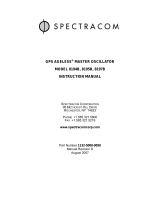 Orolia GPS Ageless Master Oscillator 8194B, 8195B, 8197B User manual
Orolia GPS Ageless Master Oscillator 8194B, 8195B, 8197B User manual
-
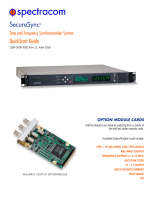 Orolia SecureSync 1200 Quick start guide
Orolia SecureSync 1200 Quick start guide
-
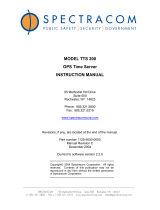 Orolia TTS 200 GPS Time Server User manual
Orolia TTS 200 GPS Time Server User manual
-
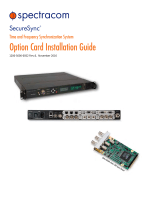 Orolia SecureSync User manual
Orolia SecureSync User manual
-
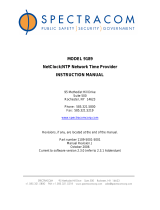 Orolia 9189 NetClock/NTP Network Time Provider User manual
Orolia 9189 NetClock/NTP Network Time Provider User manual
-
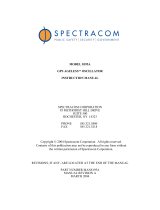 Orolia 8195A GPS Ageless Oscillator User manual
Orolia 8195A GPS Ageless Oscillator User manual
-
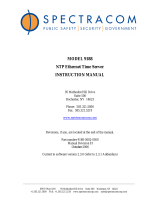 Orolia 9188 NTP Ethernet Time Server User manual
Orolia 9188 NTP Ethernet Time Server User manual
-
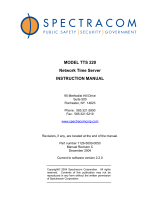 Orolia TTS 220 Network Time Server User manual
Orolia TTS 220 Network Time Server User manual
-
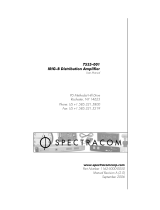 Orolia 7535-001 IRIG-B Distribution Amplifier User manual
Orolia 7535-001 IRIG-B Distribution Amplifier User manual
-
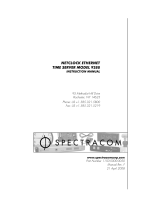 Orolia NetClock Ethernet Time Server 9288 User manual
Orolia NetClock Ethernet Time Server 9288 User manual
Other documents
-
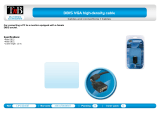 T'nB ACMPTWINWH Datasheet
T'nB ACMPTWINWH Datasheet
-
Work-pro RCS 403 PRO T User manual
-
Vertex VXR-1000 User manual
-
fantastic furniture JAVBCK2DROOOPABOAK Assembly Instructions
-
Vertex FTL-7011 User manual
-
Vertex VX-180EU User manual
-
Ericsson DRC-200 Specification
-
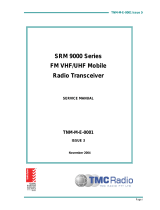 TMC Radio SRM9025 User manual
TMC Radio SRM9025 User manual
-
Ritron TS-442 User manual
-
YAESU FT-817 - Operating instructions













































